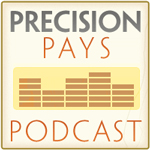 IF YOU ARE APPLYING FALL NITROGEN TOO EARLY, STOP! MISUSE MAY ELIMINATE FALL APPLICATION FOR EVERYONE
IF YOU ARE APPLYING FALL NITROGEN TOO EARLY, STOP! MISUSE MAY ELIMINATE FALL APPLICATION FOR EVERYONE
We’ve shared with you in this forum on many occasions that increased regulations and legislation are headed your way. And in this case, some farmers and applicators might be asking for it. It is too early to be fall applying nitrogen. Environmental extremists are documenting, right now, everywhere they can find, individual cases of N being applied at inappropriate times. Is the rush to get field work done worth costing everybody in the industry fall applied nitrogen? That’s not an exaggeration and the outcome is nearer than you might choose to believe.
We’ve all been victims of “one bad apple spoiling the whole basket.” Years of responsible fertilizer application and nutrient management plans by thousands of farmers in Illinois will be undone if irresponsible behavior is undertaken and we turn a blind eye.
Take a lesson from what happened in the state of Florida. Legislation via litigation ended up costing farmers in that state after extreme environmental groups pushed their agendas through the courts. Illinois is next on their hit list. This means you. The loss of fall applied nitrogen will cost Illinois agriculture billions of dollars.
You may not be fully aware of how imminent this situation is. But take this as your notice. You will lose the opportunity to include fall applied N as a management tool in your nutrient plan if as a whole, we don’t do what’s right. We’ve talked the talk. Now it’s time to walk the walk.
Illinois farm organizations and the Illinois EPA have been in your corner, supporting your access to fall N. Not following best management practices for nitrogen undermines everyone’s credibility and will soon cost you this option.
The future of fall applied N in the state of Illinois depends on YOU. Do what’s right.
- The IL Fertilizer and Chemical Association recommends using nitrogen stabilizers for ALL fall applied N.
- Wait until after October 15th before even considering N application.
- Only apply N when the soil temps are in the low 50’s and the longterm forecast is for sustained cool weather.
- If you choose NOT to use an N stabilizer, only apply N when soil temps are below 50 degrees and will stay that way.

 As weather across the Corn Belt improved this week to help speed harvest, some farmers are either thinking about or applying fall fertilizer.
As weather across the Corn Belt improved this week to help speed harvest, some farmers are either thinking about or applying fall fertilizer.











